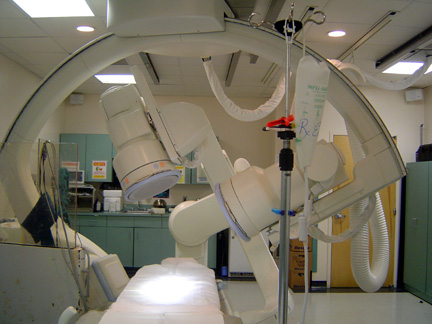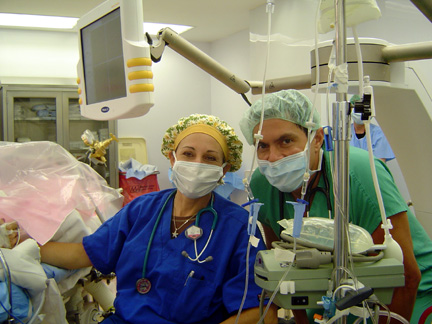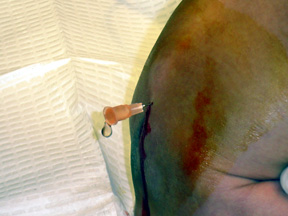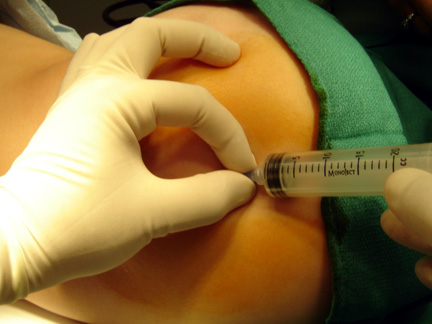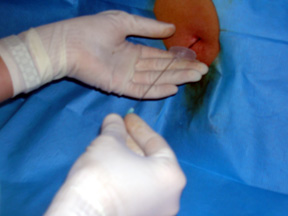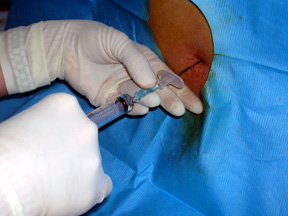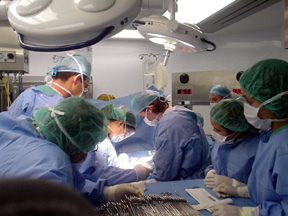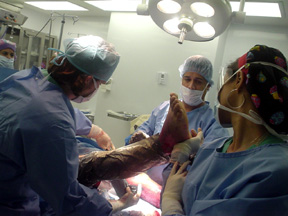Interventional Pain Management
The University of Puerto Rico School of Medicine and the Department of Anesthesiology are involved with patient in the peri-operative period. The Acute Pain Management Service was created in August 2005 by Francisco Lebrón, MD and Carlos Buxo, MD.
This service is provided to patients upon request by the surgeon or anesthesiologist involved in the surgical procedure via a pain management consult. Other times a non-surgical service, including Internal Medicine and its subspecialties, also requests consults on a 24 hour/ 7 days a week on call basis. Consults for acute postoperative pain management are for patient-controlled analgesia (PCA), epidural infusions, intrathecal infusions, or continuous regional nerve block infusions as well as recommendations for in-hospital management and discharge planning for patients on chronic opioid treatment or patients with cancer pain. The Pain Service should be contacted at pager 787-409-7766 by the nursing staff for any pain management consult.
Patient-controlled analgesia affords the patient an alternative to traditional methods of pain management. PCA provides a means for self-administration of a physician’s prescribed dose of a narcotic, on demand, providing a consistent level of pain relief. PCA offers reliable analgesia, a measure of control over timing and frequency of narcotic injections while decreasing dependence on nursing administration of narcotics. This will help to eliminate the peaks and troughs associated with the pain/comfort/sedation cycle.
Epidural and intrathecal analgesia are proven to be beneficial for patients in the acute postoperative period after major abdominal, thoracic, or lower extremity surgery. This modality provides a continuous infusion of local anesthetic and opioids. The patient is able to ambulate, and the respiratory and gastrointestinal function returns to baseline earlier when compared to patients without epidural analgesia.
Continuous peripheral nerve block anesthesia offers many clinical advantages that contribute to both an improved patient outcome and overall lower healthcare costs. Peripheral nerve blocks provide excellent anesthesia and postoperative pain relief, fewer side effects than general anesthesia, and facilitate early physical activity. They are associated with reduced use of opioids for postoperative pain, fewer postoperative complications, and earlier discharges. This is particularly desirable and effective in elderly and high-risk patients undergoing a wide variety of surgical procedures, particularly on the upper and lower extremity.
Pain is prominent in surgical patients and is not beneficial. Good pain treatment starts with assessment. Treatment needs to be individualized and multimodal. Treating pain aggressively shortens hospital stay and improves outcome. Pain treatment options include intravenous patient-controlled analgesia, thoracic and lumbar epidurals, LAs and opioids, intrathecal catheters, and peripheral block nerves. Teamwork with nurses, physicians, and other providers is required. Consult a pain specialist when pain is limiting patient progress and treatment.
Our mission is to achieve the best possible care and pain relief for our surgical and acute pain patients, to perform evidence based anesthesia and analgesia, and to optimize education, skill, and coordination of all health care providers to conduct epidural anesthesia in the most efficient, effective and safe manner possible throughout our institution.

